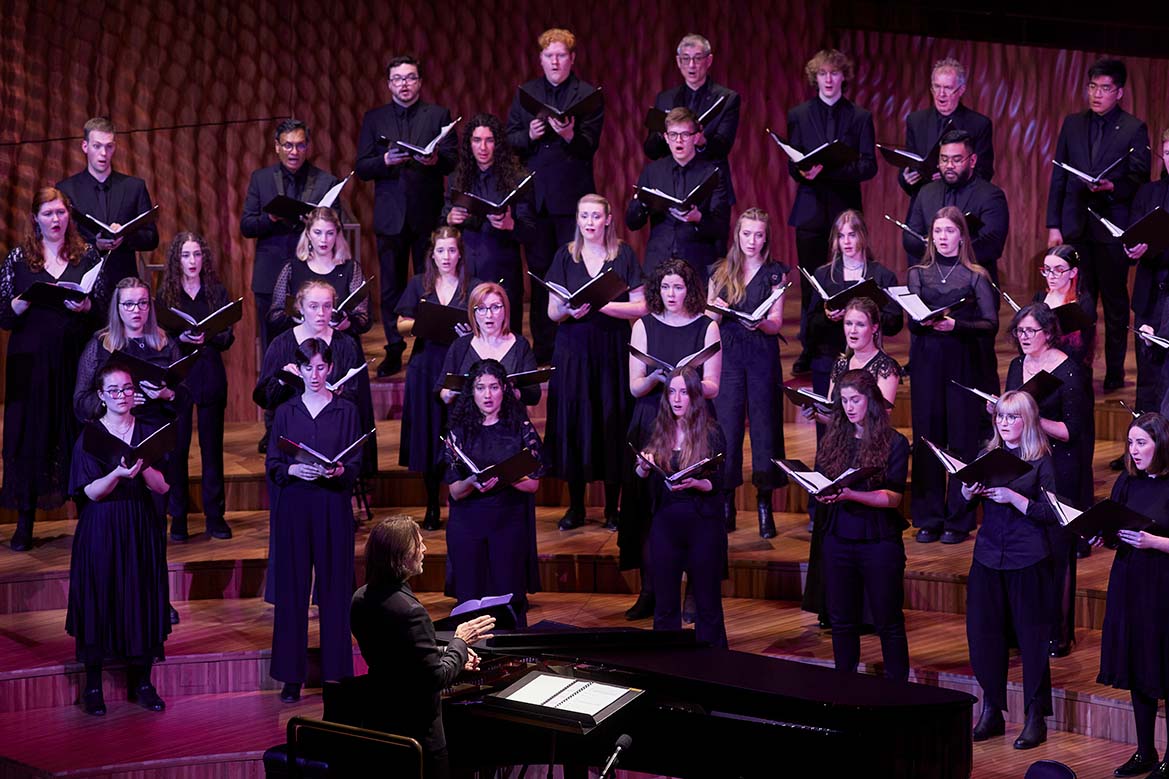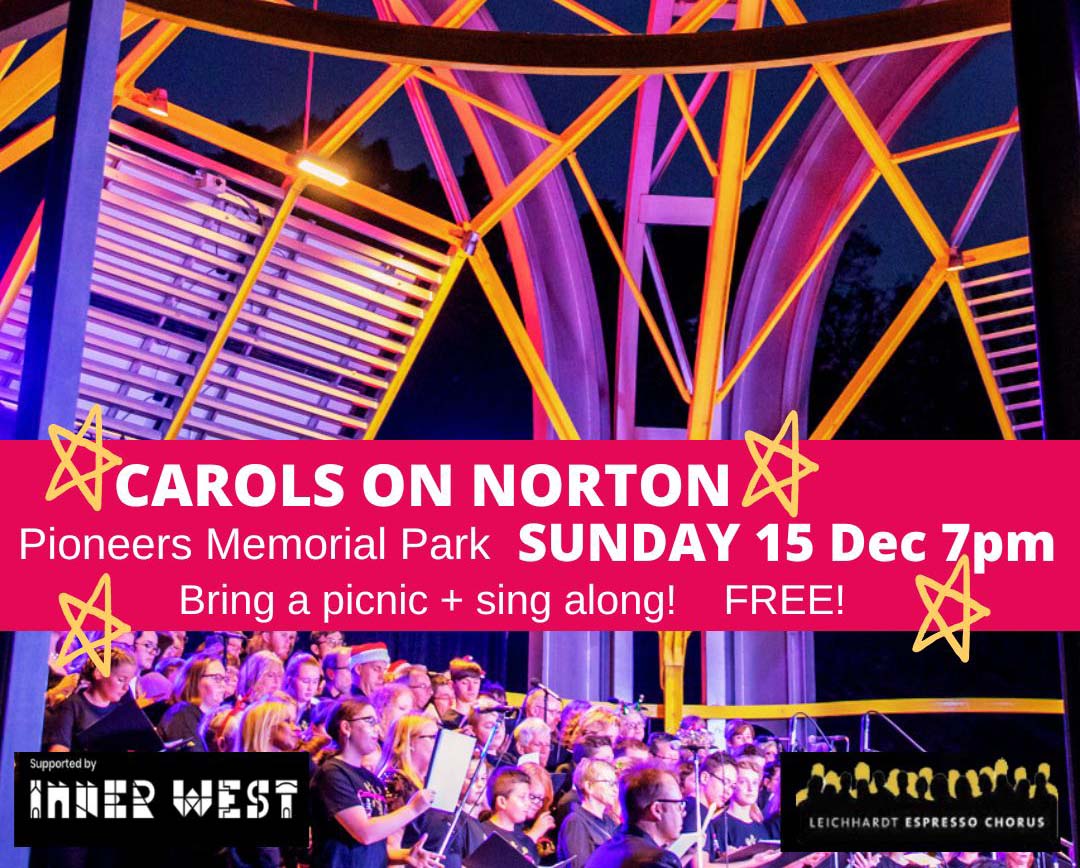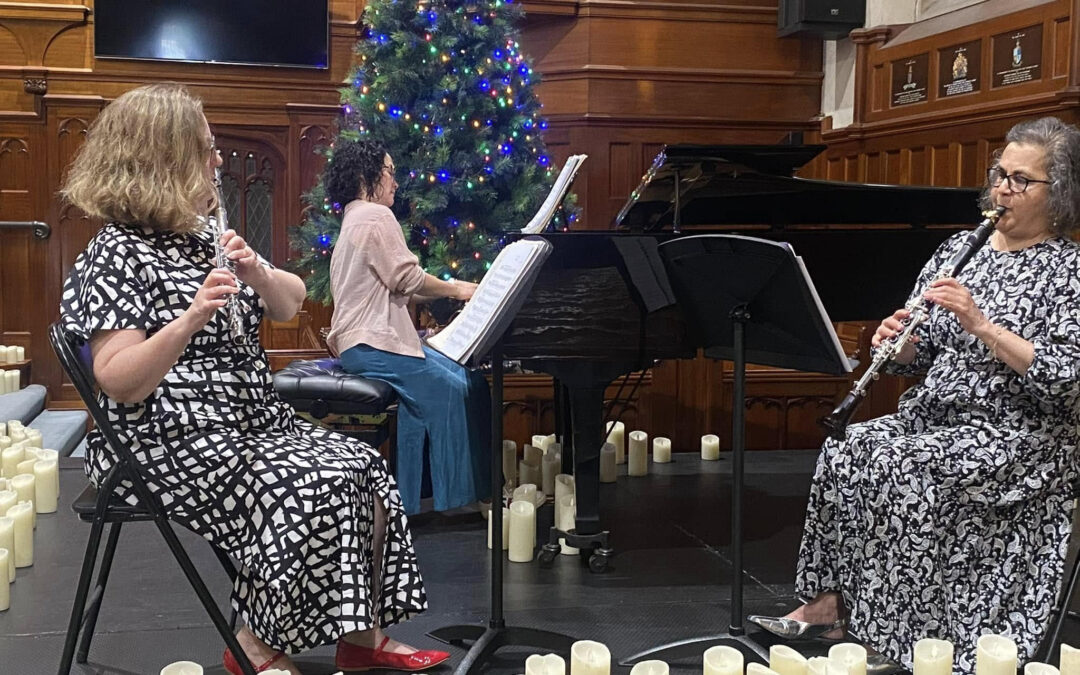Sydney Philharmonia Choirs | The Sacred Veil – Eric Whitacre Conducts
17 September 2022, Sydney Opera House Concert Hall
An unusual concert: focusing on the works of the American superstar choral composer, conducted by the man himself!
Eric Whitacre occupies a unique position in the world of choral music. There would be few amateur and professional choirs who have not sung at least one of his works and he is also known as an inspiring choral conductor.
The large choir in this performance (some 80 voices) was primarily Sydney Philharmonia Choirs’ young adult choir VOX, filled out with members of the Chamber Singers.
The first item on the program was the only piece not composed by Whitacre. It was Tarimi Nulay – Long time living here by Deborah Cheetham (music and words) it was presented in a Gadigal translation (by Matthew Doyle), accompanied by Claire Howard Race on piano, and Julian Smiles on cello, and ably conducted by the talented Elizabeth Scott, the music director of the VOX choir. The work was premiered by the Sydney Philharmonia in 2020 and has been programmed to begin each concert in 2022. It explored some interesting choral sonorities, including some vocal sound-effects and made an effective start to the evening’s program.
After this piece Eric Whitacre took over the conducting, first presenting two short a cappella works: Lux Aurumque and Sainte-Chapelle, before the pianist and cellist reappeared for the major work of the evening: The Sacred Veil.

Whitacre is a very experienced choral conductor. He has conducted around the world, and during the isolation of the pandemic his ground-breaking Virtual Choirs (over the internet) united 100,000 singers from more than 145 countries. Tonight, he was relaxed and affable in front of the Opera House audience, introducing each of his compositions. All three used texts by his great friend and collaborator Charles Anthony (Tony) Silvestri. For Lux Aurumque (‘Light and Gold’), Silvestri translated into Latin a verse in English by Edward Esch, about whom there appears to be no information known other than his date of birth (1970). The text is short enough to give here:
Light,
Warm and heavy as pure gold
And angels sing softly
To the newborn babe.
and it was the work that Whitacre used in his first Virtual Choir in 2010.
The second a cappella work was Saint-Chapelle, where Whitacre sets a text in Latin about a young girl being amazed by the stained-glass windows in the chapel of Sainte-Chapelle in Paris.
In both these pieces Whitacre shows what can be done with unaccompanied voices, achieving some gorgeous choral sounds.
The Sacred Veil, which was the major work in tonight’s concert is a quite remarkable undertaking. In its publicity, Sydney Philharmonia provided the following warning:
“A note on this concert’s content
Please note The Sacred Veil includes themes of experiencing cancer and bereavement, and contains descriptions of medical procedures.
“The Sacred Veil isn’t for the faint of heart. The nearly hour-long score opens up a psychological and emotional space where love and loss become intimate companions.” – Rick Shultz, Los Angeles Times”
And I can only agree. The text is a series of poems where Silvestri grieves for the death of his wife, Julia, from cancer. Along with the beautiful poems, there are excerpts from Julia’s diary, and even a medical report. Who would think of setting the following unpromising lines to music:
I’m afraid we found something…
(Pathology confirms grades I, II, and III
Mucinous cystic adenocarcinoma with
Focal carcinosarcoma consistent with
Ovarian primary. Recommend six cycles
Taxol and Carboplatin…)
And this is only one of six similar verses in this section! Yet this section of the work (No.6, of 12) was one of the most powerful for me. The bare recitation of the medical language was interspersed by the anguished cries of ‘I’m afraid we found something’ and ended with the moving:
‘I’m afraid we found something..
I’m afraid we found something..
I’m afraid.’
Whitacre directed the large choir arrayed wide before him more in the manner of the conductor of an orchestra. His broad sweeping arm gestures and intricate hand and finger directions along with the lightness and grace of his lithe and dancing movement was entrancing.
The piano and cello played throughout the work, providing two additional voices which both enhanced and echoed the choir, at times in solo but always underpinning the moments of pathos and sweet memory in the text. They also had two instrumental sections, nos. 5 and 7 where they shone.
Whitacre has employed all his skill as a composer to set these texts, and it is unquestionably a fine achievement. He uses a wide range of vocal effects (humming, breathing sounds, etc.) in his intricate vocal textures, always in the service of the text, and the combined effect of the text and music was mesmerising.
Some comments from the audience afterwards: “very dark”, “incredibly moving”, “I had to mop myself up off the floor”, “a rare treat to see a composer conducting his own music”, (and, finally) ‘he’s gorgeous”.

Photography: Keith Saunders





























